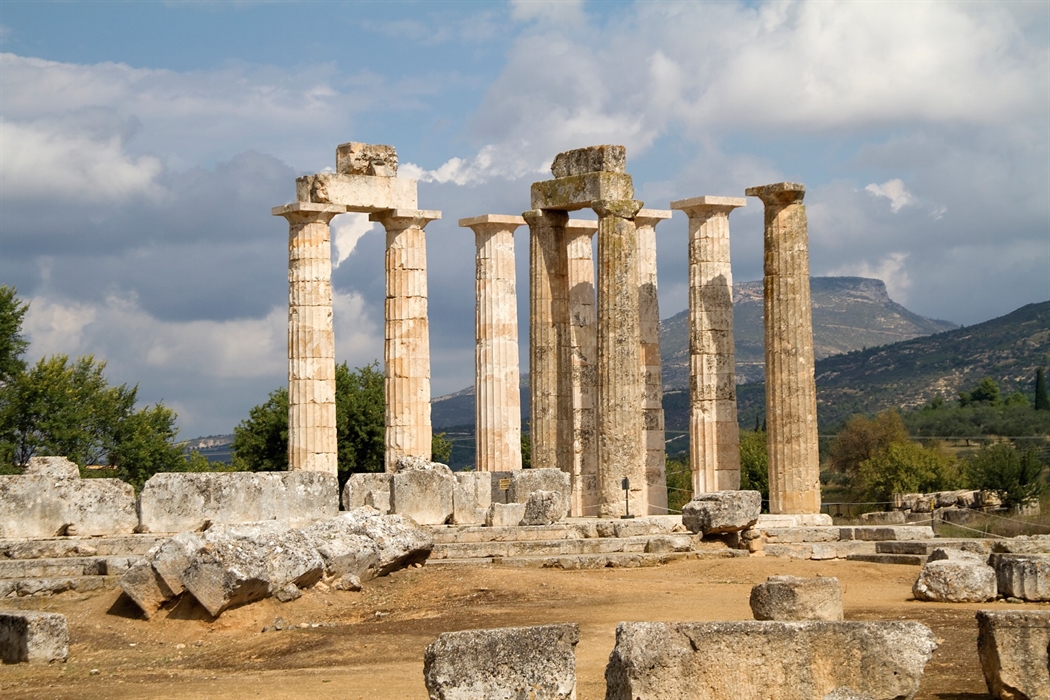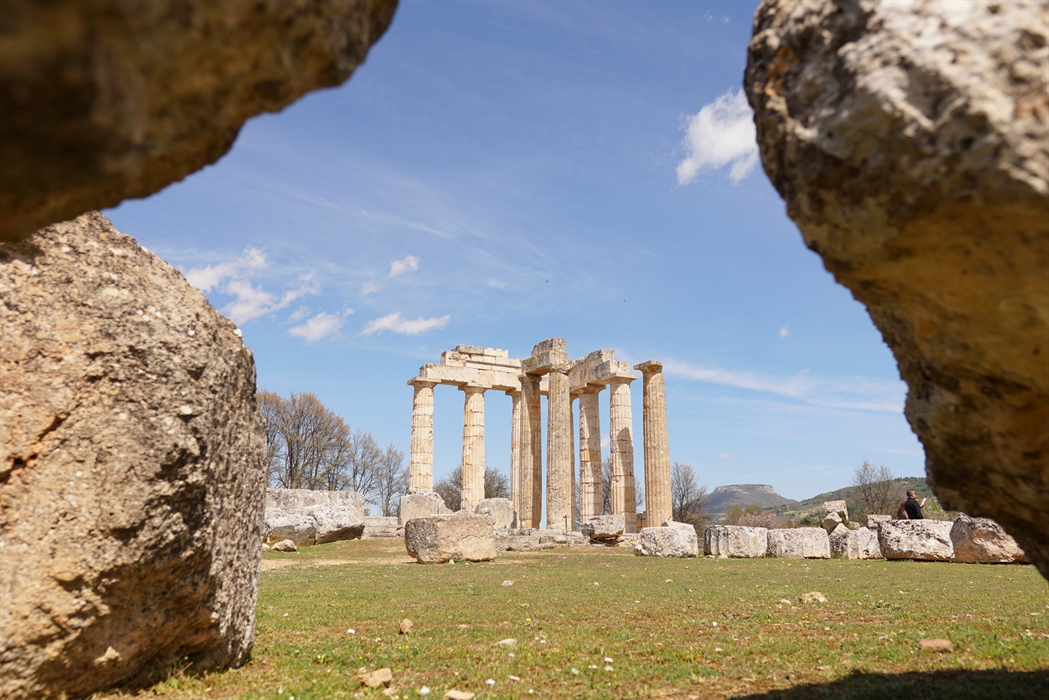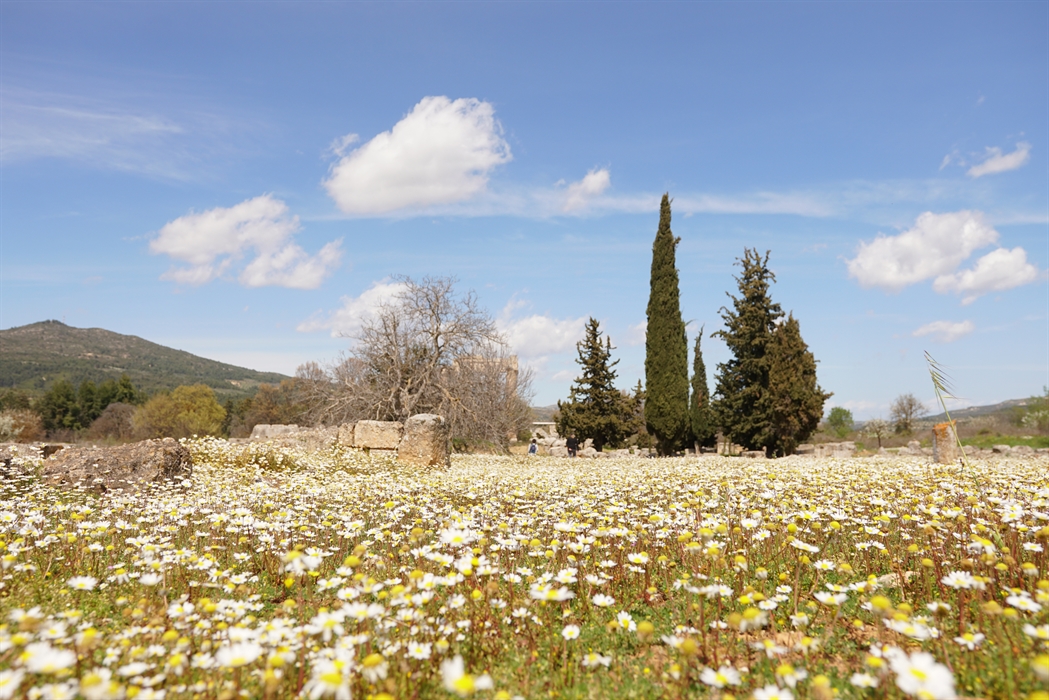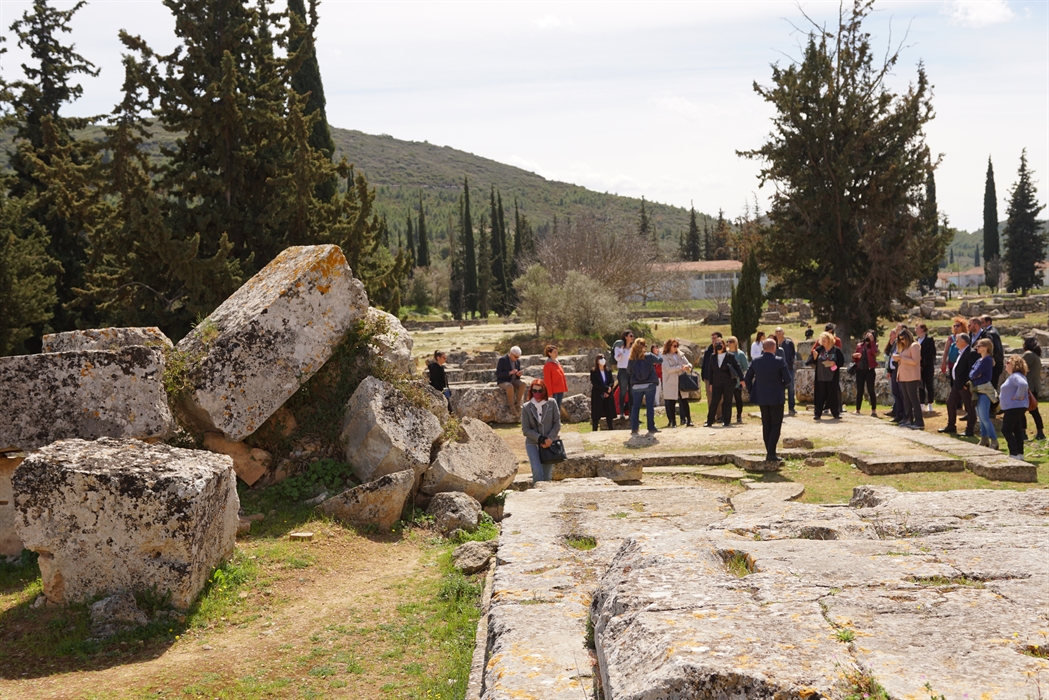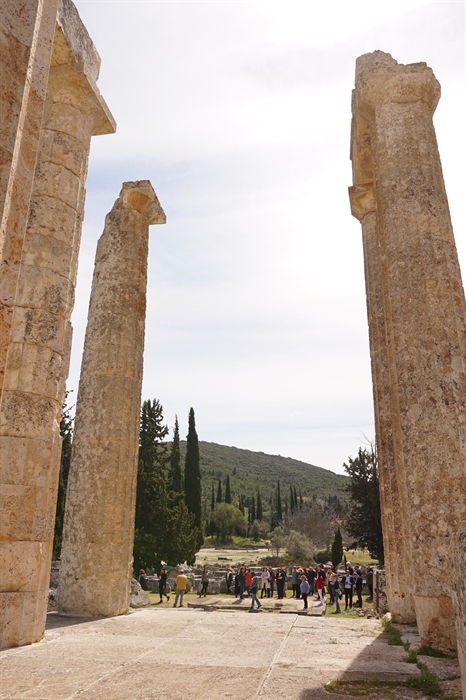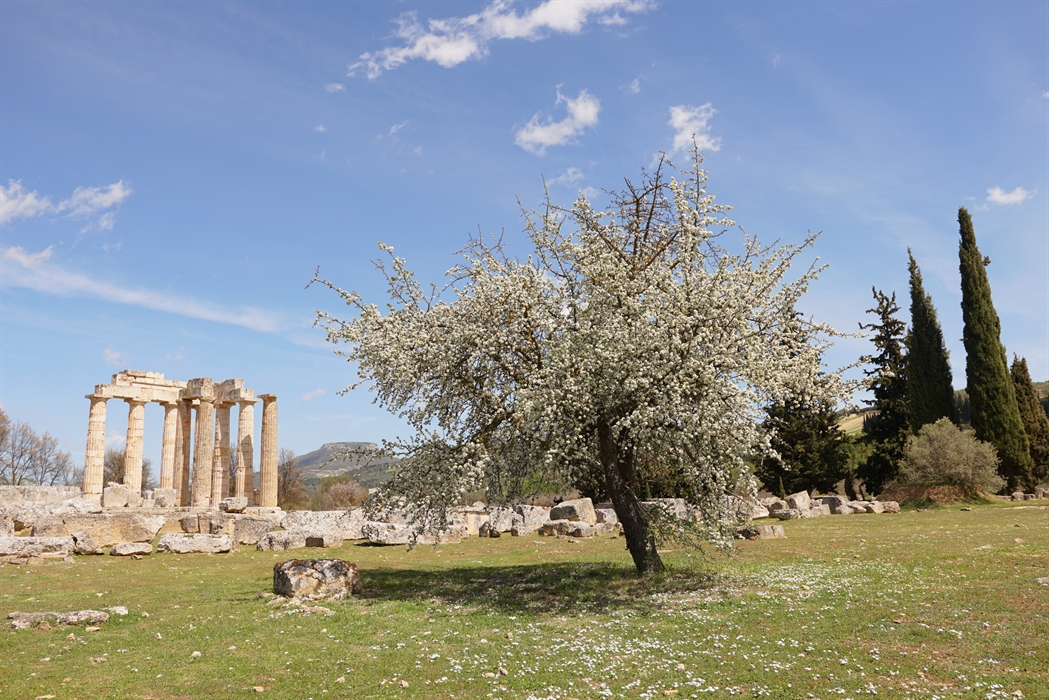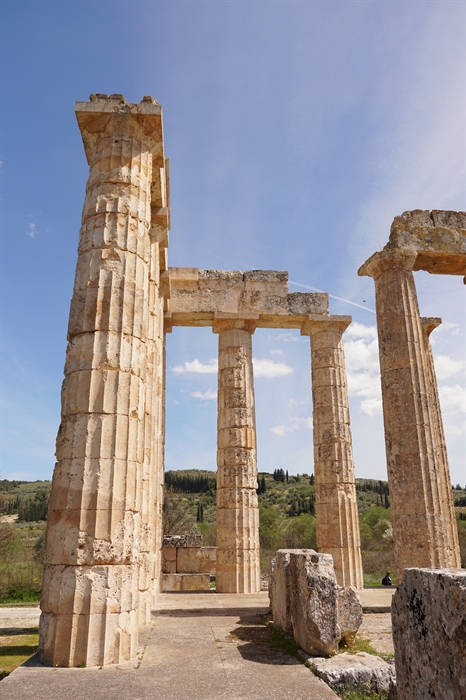Ancient Nemea
The archaeological site lies on the foot of the Arcadian mountains, at an altitude of 333m. The most important attractions are the Temple of Zeus and the Stadium.
Nemea is a place linked with mythology and ancient Greek history. It was named after the Nymph Nemea, daughter of river Asop, and it is considered one of the most sacred locations in Greece. Here, the demigod hero Hercules carried out the first labour that king Eurystheus assigned to him. He slayed the great Nemean lion, offspring of Orthos and Echidna. It was a mighty, strong creature, hiding in a cave of Mount Treton. Hercules trapped the lion, and then killed it using a bat and his own hands.
Nemea was the place where the seven Argeian generals decided to make a stop, during their campaign to Thebes (Seven Against Thebes). According to myth, the generals asked a nurse for some water. It wasn’t some random child she took care of, but Opheltes, son of the king of the city. However, when she left the baby in a crib to fetch some water for the generals, a serpent bit it and killed it. In order to placate the gods, the generals established the Nemean games. And the Argeians honoured the infant with funeral games and awarded the winners with a wreath of wild celery (this is what the infant’s crib was made of).
The archaeological site of Nemea lies on the foot of the Arcadian mountains, at an altitude of 333m. The position and the climate contributed to the selection of this location for the panhellenic Nemean games.
The most important attractions are the Temple of Zeus and the Stadium.
The Temple of Zeus looms in the fertile plain. Its main characteristic is its position in the centre of the sanctuary, just like in Olympia and Delphi. The temple was built with tufa in the 4th century BC, probably in the place of the Archaic temple. The impressive columns, preserved up to our day, dominating the landscape are about 10 m high. The base of an oblong altar has also been preserved. During the Early Christian Period, most of the 36 columns of the temple were dismantled. However, thanks to restoration projects, several of them are standing again now.
The Stadium, where every two years games in honour of Opheltes took place, was built in the late 4th century BC, as part of the Sanctuary’s regeneration project. Around 270 BC, the games moved to Argos. After a period of time, during which the games were held in Nemea and Argos alternately, they moved to Argos for good. The Stadium lies in the most advantageous part of the valley, offering a great view of the flatland. It could accommodate 40,000 spectators.
Read about the Archaeological Museum of Nemea.
Location
Find the destination on the interactive map below.
Categories
Weather
Σχετικό περιεχόμενο χρηστών (UGC)
Ενημερωθείτε για ενδιαφέροντα θέματα γύρω από τον προορισμό μέσα από το περιεχόμενο των χρηστών μας
Discover 7 hidden gems of the Peloponnese
Many of you may have already visited some of the most renowned attractions…
TOP 10 archaeological museums in the Peloponnese
Olympia, Mycenae, Epidaurus, Diros Cave, Ancient Corinth, Messene and…
TOP 10 Castles in the Peloponnese
Castles galore! Mystras, Monemvasia, Palamidi, Methoni, Koroni,…
Newsletters
- About us
- FAQ's
- Map
- Tourism information centers
- Disclaimer
- Sitemap
- Our brand
- Media roum
- Adding your bussiness
- Corporate
- MICE

Peloponnese. Greece beyond the obvious





Design and creation from Cosmote
Marinas and Moorings
Diving centers
Get inspired
- Media gallery
- Blog
- The Peloponnese in the media
- Your feedback
- Users' general content
- Users' local products
- Users' events content
- Ask a local
More
- Accommodation
- Travel agencies
- Restaurants
- Services
- Destinations Map
- Weather
- Public transport
- Events
- Frequently asked questions
- Useful phones
- B2B
- Destination Data
- Contact

